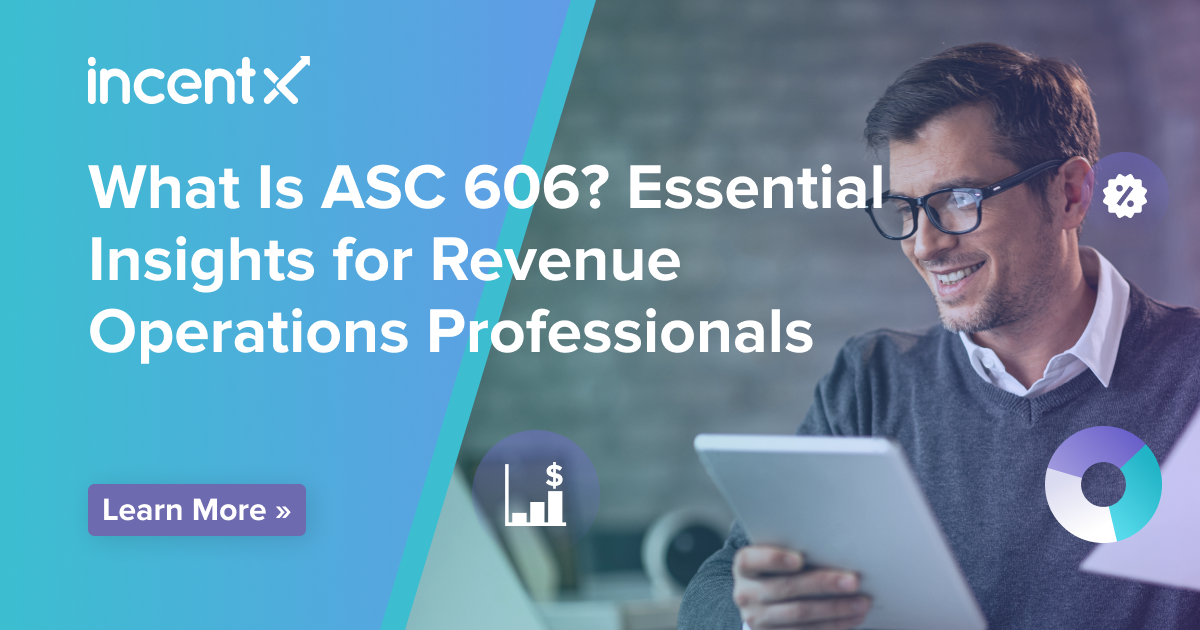Revenue recognition is a critical aspect of financial reporting, and with the introduction of Accounting Standards Codification (ASC) Topic 606, it has become even more essential for private companies to comply with the new standards.
ASC 606 outlines a five-step process that companies must follow to recognize revenue accurately, ensuring transparency and consistency in financial reporting. In this blog, we will delve into the implementation of ASC 606 for private companies, exploring the essential requirements and steps involved in revenue recognition practices.
Whether you are a growing business or an established enterprise, understanding and effectively applying revenue standard under ASC 606 is crucial to ensure compliance and accurate financial reporting. Let’s explore the world of revenue recognition under ASC 606 and how it impacts private companies.
ASC 606 Revenue Recognition Requirements
What is Revenue Recognition?
Revenue recognition is a key accounting procedure that documents expected payments for goods and services offered by a company. This process accurately records sales transactions and is crucial for assessing an organization’s financial health.
Changes in Revenue Recognition under ASC 606
In 2019, the Financial Accounting Standards Board (FASB) released ASC 606, presenting a fresh set of accounting guidelines for recognizing revenue. This standard supersedes earlier rules that allowed revenue to be recognized on an accrual basis, without regard to actual cash flow. Under ASC 606, businesses are urged to scrutinize customer agreements more carefully, considering the type and length of services offered, as well as the related payment terms.
Parameters Defined by ASC 606 in Customer Contracts
ASC 606 sets specific parameters to ensure clear and transparent revenue recognition practices. It focuses on the following aspects of customer contracts:
- Type of Services Provided: Identifying the type of services or products provided to customers is crucial for determining the contract’s performance obligations.
- Timing of Services: The timing of services indicates the period over which a company will recognize revenue, whether on a monthly, quarterly, or annual basis.
- Amount: The financial statements should accurately reflect the price of all performance obligations specified in the customer contract.
Compliance with these parameters ensures that accounting period and revenue recognition is aligned with the actual delivery of goods or services, providing a comprehensive view of an organization’s financial performance. Now that we understand the requirements of ASC 606 let’s explore the steps involved in its implementation for private companies.

Implementing ASC 606 for Private Companies
While ASC 606 brings improved transparency and standardized revenue recognition practices, implementing it can pose challenges, especially for small businesses. Let’s delve into some of the hurdles and considerations they need to address during the implementation process.
Challenges Faced by Small Businesses
1. Simplicity to Complexity: Small businesses with simple revenue cycles may find tracking contracts, prices, and performance obligations relatively more straightforward. However, as they grow, the complexities of ASC 606 become more pronounced, requiring them to adapt to a more intricate accounting framework.
2. Expertise Requirement: Implementing ASC 606 demands internal expertise in handling complex standards and interpreting contractual arrangements. Small companies may face difficulties in hiring or training staff with the necessary skills to navigate the complexities of revenue recognition under ASC 606.
Need for Internal Expertise and Repeatable Processes
1. Contract Reviews: ASC 606 requires careful evaluation of contracts to identify performance obligations and allocate transaction prices. Cross-functional communication between accounting, legal, and sales teams is essential. Implementing repeatable processes for contract reviews ensures consistency and accuracy in recognizing revenue.
2. System Improvements: Businesses must upgrade their systems to accommodate the requirements of ASC 606. These systems should be capable of capturing granular information about historical transactions, discounts, disputes, and fees across the customer base.
Tracking Transactions Across Multiple Periods
1. Integration of Data: Companies often encounter challenges integrating data from multiple operational tools. For accurate revenue recognition, finance teams need a centralized platform to segment and analyze transaction data effectively.
2. Price Determination: The transaction price requires detailed information about historical transactions and pricing adjustments. Finance teams must establish systems that consolidate and organize this information to set the right price and comply with ASC 606.
By addressing these challenges and investing in systems that facilitate compliance with ASC 606, private companies can streamline their revenue recognition processes and gain valuable insights into their financial performance.
The Five Steps of ASC 606 Revenue Recognition
To ensure compliance with ASC 606, private companies must follow a structured five-step process for revenue recognition. Let’s explore each step in detail:
1. Identify the Contract(s) with a Customer
Contracts play a fundamental role in revenue recognition under ASC 606. Companies must identify contracts with customers, whether written or oral, that have enforceable rights and obligations. Several criteria come into play during contract identification:
- Commitment and Rights: The agreement between the parties should demonstrate a commitment to perform and rights to receive consideration.
- Payment Terms: Companies must determine the agreed-upon payment terms and conditions.
- Collectability: There should be a reasonable expectation of collectability for consideration.
- Commercial Substance: The transaction should have commercial substance, meaning it is expected to impact the entity’s future cash flows.
For example, when a business bills for subscriptions and initial setup fees, the agreement should clearly state the delivery of these subscriptions (monthly or yearly) to the customer. It must also detail the customer’s commitment to pay, specifying both the payment amount and schedule. Revenue from certain fees might be recorded right away, but unearned revenue is classified as deferred and recognized once the business meets its service obligations.
2. Identify the Performance Obligations in the Contract
Performance obligations are specific commitments in a contract to provide goods or services to a customer. These obligations, which can be distinct from one another, serve as separate entities for accounting purposes.
Take, for instance, a company offering an annual software subscription, coupled with a one-time setup fee and a fee for custom integration. These charges are treated as three separate performance obligations and are monitored independently.
Identifying these obligations typically requires coordination across various departments, including accounting, legal, and sales, to ensure a mutual understanding of the services or products being delivered, their pricing, and the timing of delivery. Utilizing a centralized financial data platform can simplify this process, consolidating transaction information in one location for easier method application and monitoring of revenue recognition.
3. Determine the Transaction Price
The transaction price is the total expected payment from the customer for the goods or services provided. Calculating this price can be intricate, necessitating detailed insights into past transactions, including any discounts, disputes, and fees applicable to a broad customer spectrum.
Frequently, this data is scattered across several operational systems, lacking efficient integration. By employing a unified system that amalgamates all transaction-related data, finance departments can more effectively dissect and assess this information, thereby accurately determining the appropriate transaction price.
4. Allocate the Transaction Price to the Performance Obligations
When dealing with a contract that includes several performance obligations, it is necessary for a company to distribute the transaction price among these obligations. The Financial Accounting Standards Board (FASB) provides guidance on how to estimate the standalone price of each obligation, as well as how to allocate discounts or address changes in the terms of the contract. This ensures that the revenue is appropriately recognized for each distinct obligation within the contract.
5. Recognize Revenue When (or as) the Entity Satisfies a Performance Obligation
Revenue is acknowledged at the point where a company fulfills a performance obligation to its customer, which can span several accounting periods. For example, if a business enters into a one-year agreement with a customer, it will recognize the revenue incrementally across the 12 months as it meets its obligations under the contract.
To effectively implement ASC 606, businesses need a deep understanding of their transactions and a system in place that can handle the intricacies of revenue accounting and recognition. By leveraging financial data platforms and automation tools, private entities can not only comply with ASC 606 but also derive significant insights into their operations, enhancing their financial management and strategic planning.

Real-World Examples of Revenue Recognition under ASC 606
To gain a better understanding of how ASC 606 applies in practice, let’s explore some real-world examples of revenue recognition:
Example 1: Software as a Service (SaaS) Company
Consider a SaaS company that offers a subscription-based software product with an annual subscription fee. Under ASC 606, the company must identify the performance obligations in the contract, which include the monthly revenue, providing access to the software and ongoing customer support.
- Identify the Contract: The contract is established when the customer agrees to pay for the annual subscription, and the company agrees to provide access to the software and support.
- Identify the Performance Obligations: The company has two distinct performance obligations: providing access to the software and offering ongoing customer support.
- Determine the Transaction Price: The transaction price is the annual subscription fee agreed upon by the customer.
- Allocate the Transaction Price: The company must allocate the transaction price between the two performance obligations based on their standalone selling prices.
- Recognize Revenue: Revenue is recognized over the subscription period as the company fulfills its performance obligations, providing access to the software and offering customer support.
Example 2: Construction Company
Consider a construction firm contracted to erect a commercial building. This agreement encompasses a range of services, including design, provision of materials, and labor.
- Identify the Contract: This step occurs when both parties concur on the project’s specifics.
- Identify the Performance Obligations: The firm is obligated to fulfill several key tasks: offering design services, supplying the necessary materials, and executing labor.
- Determine the Transaction Price: This is the total amount agreed upon for the contract.
- Allocate the Transaction Price: The firm must distribute the transaction price among the identified obligations, according to either their individual or relative standalone selling prices.
- Recognize Revenue: Revenue is acknowledged as obligations are met. For instance, revenue from design services is recognized progressively as the design work advances, while revenue from materials and labor is recognized as these aspects of the project are completed. This structured approach ensures the firm accurately reflects its earnings in alignment with the project’s progress and in compliance with ASC 606 standards.
These examples illustrate how ASC 606 impacts revenue recognition across different industries and contract types. Implementing ASC 606 for private companies requires careful consideration of the contract terms, performance obligations, and transaction data. Automation tools and finance data platforms can streamline the revenue recognition process, ensure compliance, and provide valuable insights for finance leaders.

ASC 606 Implications for Warranties
Warranties are an essential aspect of many product sales, and ASC 606 introduces specific guidelines for recognizing revenue related to warranties. Companies must carefully evaluate the nature of their warranties and how they impact revenue recognition. Here’s how ASC 606 addresses warranties:
- Identify Warranties as Separate Performance Obligations: Under ASC 606, warranties that provide customers with an additional assurance beyond the assurance provided by the standard products or services are considered separate performance obligations. Companies must allocate a portion of the transaction price to these warranties and recognize revenue accordingly.
- Determine Standalone Selling Price of Warranties: To allocate the transaction price to warranties, companies must determine the standalone selling price. This can be done using observable standalone sales of similar warranties or the expected cost plus a margin approach.
- Recognize Revenue Over the Warranty Period: Revenue related to warranties is recognized over the warranty period as the company fulfills its obligations under the warranty terms. If the company incurs additional costs to fulfill the warranty, such as repairs or replacements, these costs may impact the timing and amount of revenue recognition.
- Consider Impact on Deferred Revenue: In some cases, the warranty period may extend beyond the initial sale of the product or service. Companies must account for this in their deferred revenue calculations and ensure that revenue is recognized appropriately as the warranty services are provided.
Understanding and applying these guidelines is crucial to ensure accurate revenue recognition for warranties and compliance with ASC 606. Companies may need to update their accounting systems and processes to accommodate the unique considerations of warranties under the new standard.
Practical Expedients Under ASC 606
ASC 606 allows companies to apply practical expedients to simplify the implementation of the new revenue recognition standard. These practical expedients relieve specific requirements under ASC 606 and can benefit companies with limited resources or complexities. Some common practical expedients include:
- Portfolio Approach: Companies can apply the portfolio approach to groups of similar contracts with similar characteristics. This simplifies determining the transaction price and allocating it to performance obligations.
- Sales Taxes: Companies can choose to exclude sales taxes from the transaction price if they are collected on behalf of third parties.
- Incremental Costs of Obtaining a Contract: Companies can recognize certain incremental costs of obtaining a contract as an expense when incurred rather than capitalizing them.
- Costs of Obtaining a Contract with a Customer: Companies can use a practical expedient when accounting for certain costs incurred to obtain a contract with a customer.
It’s essential for companies to carefully evaluate the applicability of these practical expedients to their specific circumstances and document their decisions to ensure transparency and compliance with ASC 606.
Conclusion
ASC 606 has fundamentally altered the landscape of revenue recognition for contracts, imposing substantial adjustments for companies. Private entities in particular are required to approach these changes with careful consideration, expertise within their teams, and streamlined procedures to ensure they meet compliance standards and maintain precise financial records.
Grasping the new requirements, making use of available simplifications where fitting, and employing technological solutions can help businesses efficiently transition to ASC 606. This approach not only aids in compliance but also allows companies to concentrate on delivering value to their clients while aligning with the latest standards in revenue recognition.
Recommended Reading







